Dutching on horse racing
We have covered Dutching before in a number of articles, so read up on those specifics if you want to learn what Dutching is, how to do and how to use the specialist tools in Bet Angel to do perform a dutch bet. So this article is focused on what is the best Dutching strategy. But before we look at that, a quick appraisal on Dutching.
Speaking broadly, Dutching is a viable betting strategy on the betting exchanges now as the book overround is so small. A Dutch bet covers a number of selections in a sports betting market, rather than just one. This will increase your chances because you will win if any of those selections wins.
Bet Angel contains an advanced Dutching calculator. This means not only can you make multiple selections with your dutch bet, but you can also set a profit target, varying the profit not just the stake on each selection. But you can drive your risk and reward by varying the amount staked or the number of selections. So it makes for a good tool and strategy.
I often get questions focused on asking what selections should you make and is there any criteria that you should use? Are there dutching strategies that you can use, any Dutching systems?
The fact is there are there are loads of things that you can do, but it’s really down to exactly what you’re trying to achieve. Is it a question of having your insights into form? Or are you using a purely mechanical system? All those sort of questions can come up because it’s down to what edge you think you can bring to market.
I hope this blog post can clear up some of these questions and help you gain a better understanding of dutching.
Understanding Dutching
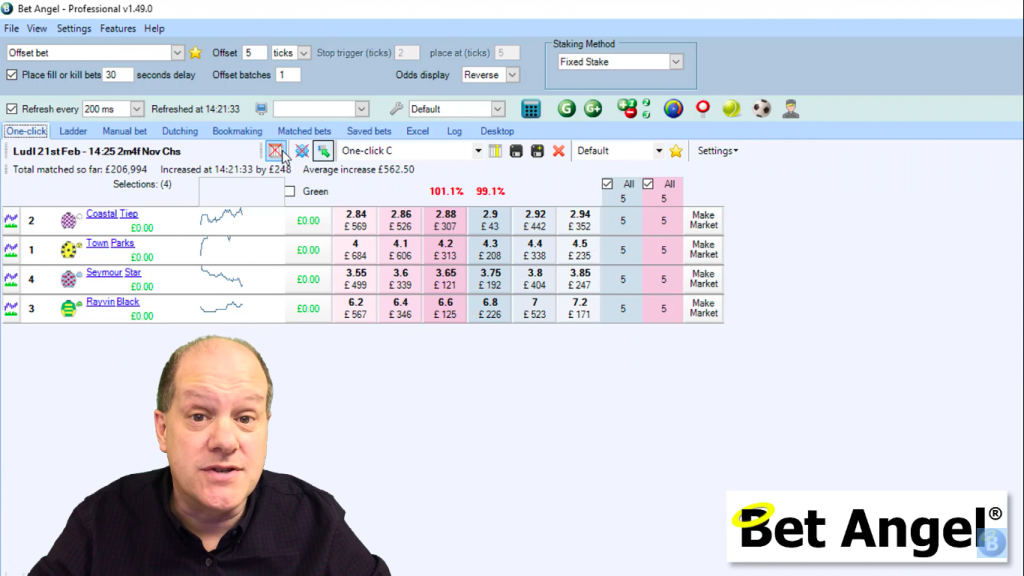
Let’s start with something that’s quite simple, today we’re looking at a market which is pictured above. You can see here we’ve got a novice chaser at Ludlow. If I go into the dutching area and click on the favourite we’re going to Dutch for a target profit of £50.
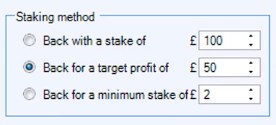
If I click on the favourite, can you see the favourite makes up 33% of the book. So the favourite is one third of the market.
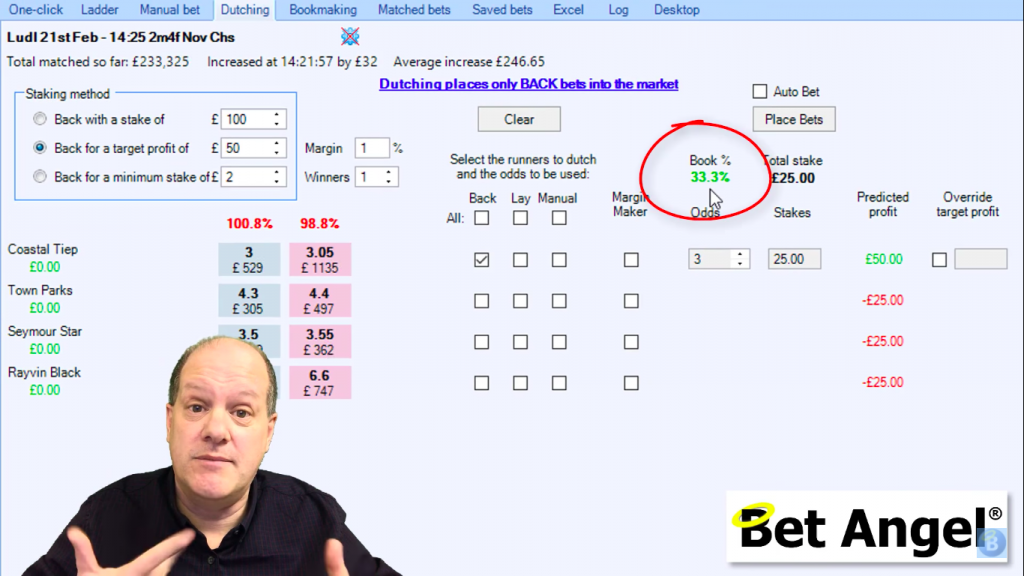
The market thinks the favourite has the 33% chance of winning, do you? If you do, then you should back it! If you don’t think that, you should lay it.
But what happens when you’re dutching? As you can see below, if we just click on that first favourite we’re effectively just backing the favourite. It simply becomes a value judgement.
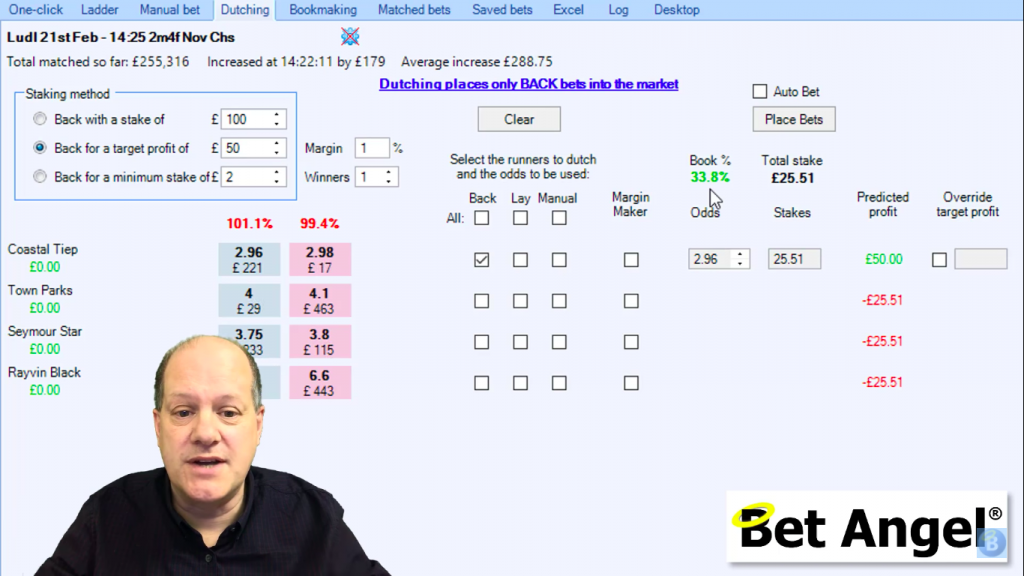
The first thing that you know and you realise with dutching is if that the price on the favourite is really short, all you’re effectively doing is placing a value back bet. Therefore, you may as well just place a bet, as you don’t really deliver much value on top of dutching.
The only thing I would say is if you use a fixed stake and you use dutching to place your back bet, then you’re effectively backing in a proportion to the stake and the book percentage. So actually if you place a back bet this way rather than using a fixed stake then over time, if you’re achieving value after commission, your bank will expand getting bigger and bigger.
So there is an advantage to using dutching to place a back bet, but essentially you’re trying to avoid just placing a back bet you want to do something a bit cleverer.
So what do you select when Dutching?
In this example I’m using for this blog post, the market is a four runner market. I don’t particularly like four runner markets for trading for anything, to be honest, but let’s have a look at it and see how we can showcase Dutching.
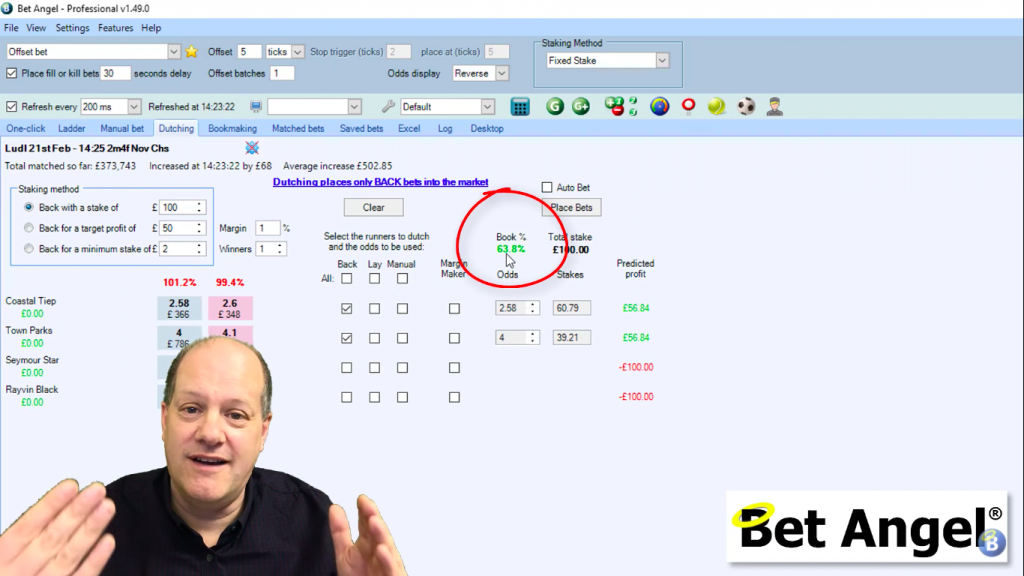
If we click on the second favourite, we can cover 63% of the entire field. What I’m trying to show here is out of the 4 runners, we’ve backed two of them. So we now have covered 50% of the field with a 60% chance of winning.
So your judgement here is asking yourself whether these two runners have a better than 60% chance of winning this race? Because if they do, then you would tend to take this particular position, but you can see here that it’s not a very exciting position.
However, you’re still sort of in the realms of value backing. Effectively, you’re not doing anything particularly clever and it’s just not that interesting. Obviously, it could be the case that the 2:25 at Ludlow could be really exciting! But… we’re just saying from a strategy perspective whether this makes sense.
Is there some logic in the way in which we’ve approached this and a forerunner market covering half the field for a 64% chance, you may find something in there but I suspect that its probably not the best place to look for an edge.
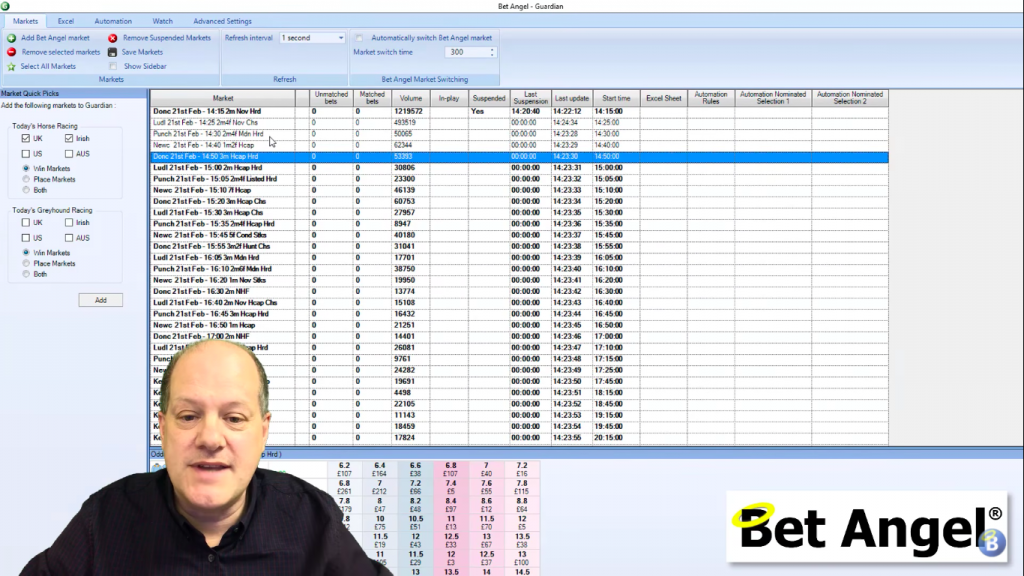
How Dutching can give you the edge
So if we have a look down the market, there are lots of different races on today’s example which you can see in the image above. It is clear that some are better than others. However, if we skip forwards to the 14:50 at Doncaster we can follow the same progress again and see where we end up.
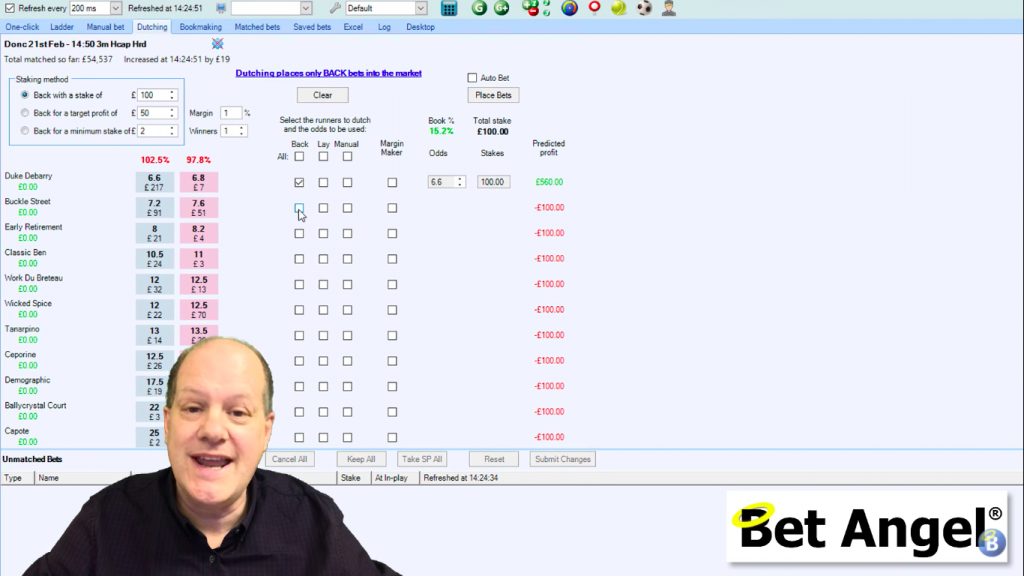
If we look at the favourite on this new race, you can see in the image above that it has got 15% of the book. It’s saying that there’s a 50% chance the favourite is going to win.
So let’s try and get that up to around 60% by dutching and see what happens…
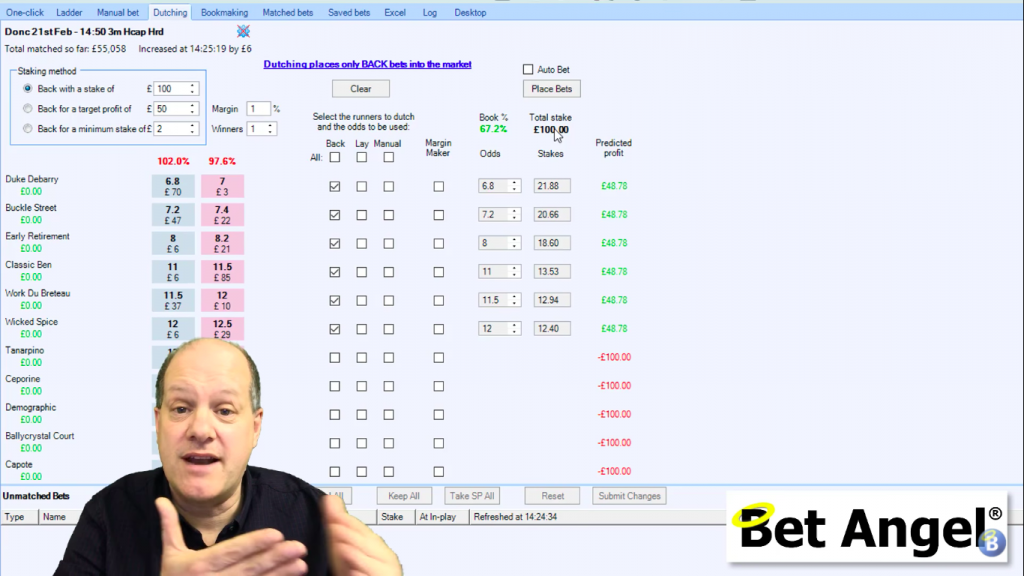
Firstly I’ve checked that we have 13 selections in this market. So, if I back the first six you can see that covering 67% of the implied chance gets a six selections out of a 13 runner a market.
Now if we look down towards the bottom you can see that some of these horse have smaller odds. Overall, can you see that we’re in a good position if 6 horses out of the 13 horses win this race. So we actually give ourselves a much broader mix in terms of the chance of some of these runners going on to win.
Whereas when we looked at the four runner market, we were just basically punting the front two! This gives you a much wider coverage and more interest within the market than narrowing your focus down to those two out of that forerunner field.
Therefore the second example clearly seems like a better proposition overall doesn’t it? Now, obviously some of this will come into the mix in terms of ‘do you think that one of these six is going to win the race?’
Summary
The scope to find a winner in the second example is much better than the first race. Not only is this because of the large number of selections, but those selections are better. Rather than just placing what is effectively a back bet, but we are also covering more selections and account for more variability in the result of the race.
Our focus on multiple runners is more or less what Dutching is all about. If you spread your risk across more selections then the chance of error is reduced and any overround in the book is spread over all those selections. If you just focus on one runner, as we did in our first example, the spread in the market is focused on that one selection, reducing our chances of long term profitability.
So when you focus on your Dutching strategy, find a range of selections to reduce your variability. Or you just end up looking for a value bet on smaller fields and that more or less negates the logic for placing a dutch bet in the first place.
Focus on markets where the outcome is the hardest to spot. That is where the best opporunties lie and where you are most likey to profit in the long term using this particular Betfair trading strategy.

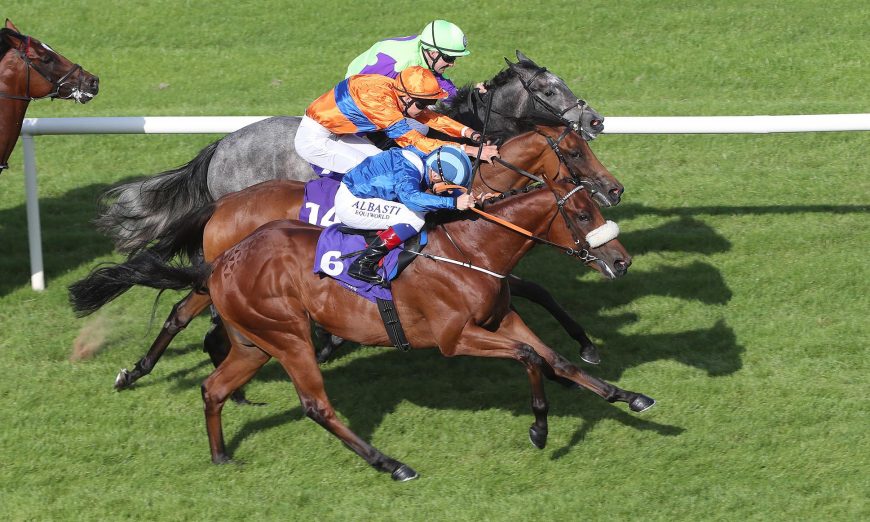
have you got a dutching calculator for just the PLACE market where the book value is rather different?
if so , is it only available on Bet Angel professional? – i only subscribe to basic at the moment.
many thanks
mick
We don’t have something specific for the place market as it stands. You can alter the book % so the calculations are correct, but the variable ditching doesn’t work specifically on multiple winner markets, unfortunately. Dutching is available on Bet Angel trader which is only £6 a month or you can use the Betdaq version, which is free.